Self-Defense with Your Children Present: What to Do
You’ve spent countless hours at the range sharpening your foundation skills and gaining speed and accuracy.
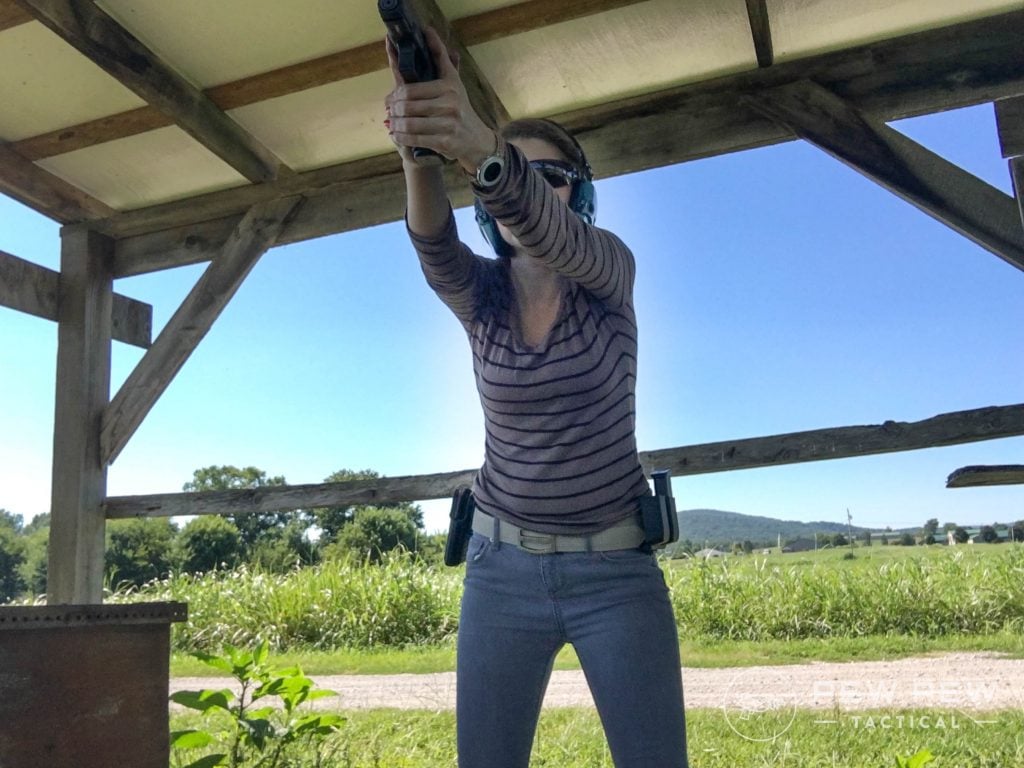
Classes? You have so many class hours under your gun belt you flat-out cannot fit more into your schedule.
Hold up, though.
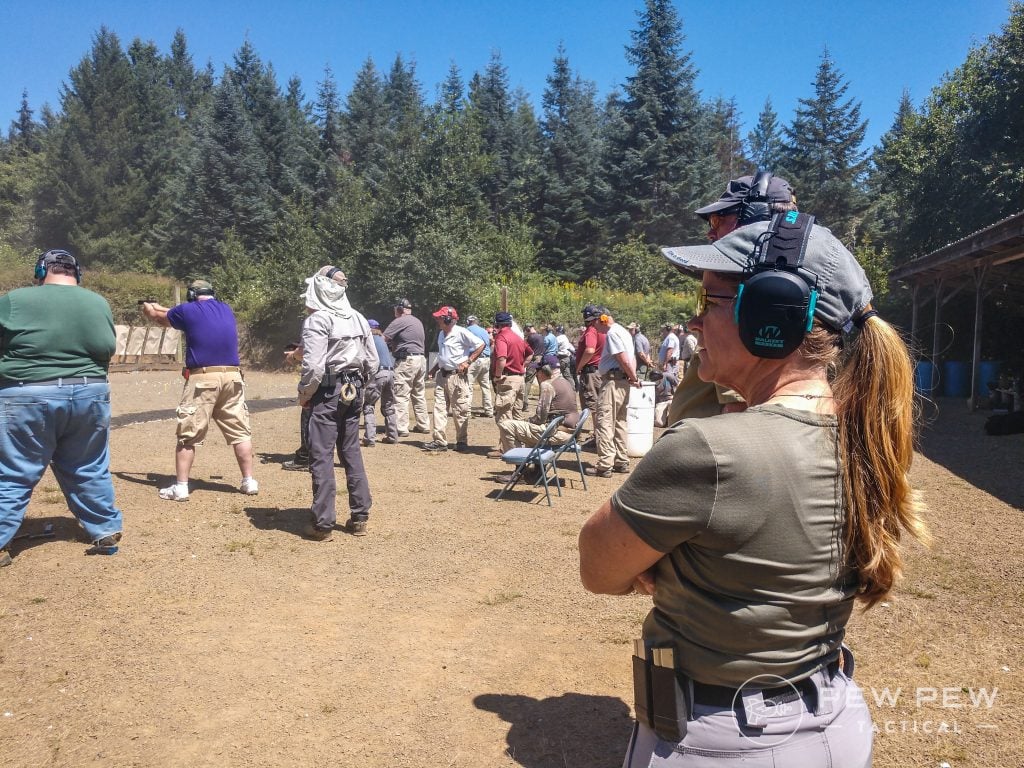
Are you a parent? Do you know how to defend not only yourself but your kids?
As parents who are gun owners, we’re responsible for more than just teaching our kids the four golden rules of gun safety. We’re also responsible for teaching our kids what to do in case of a threat to our lives.
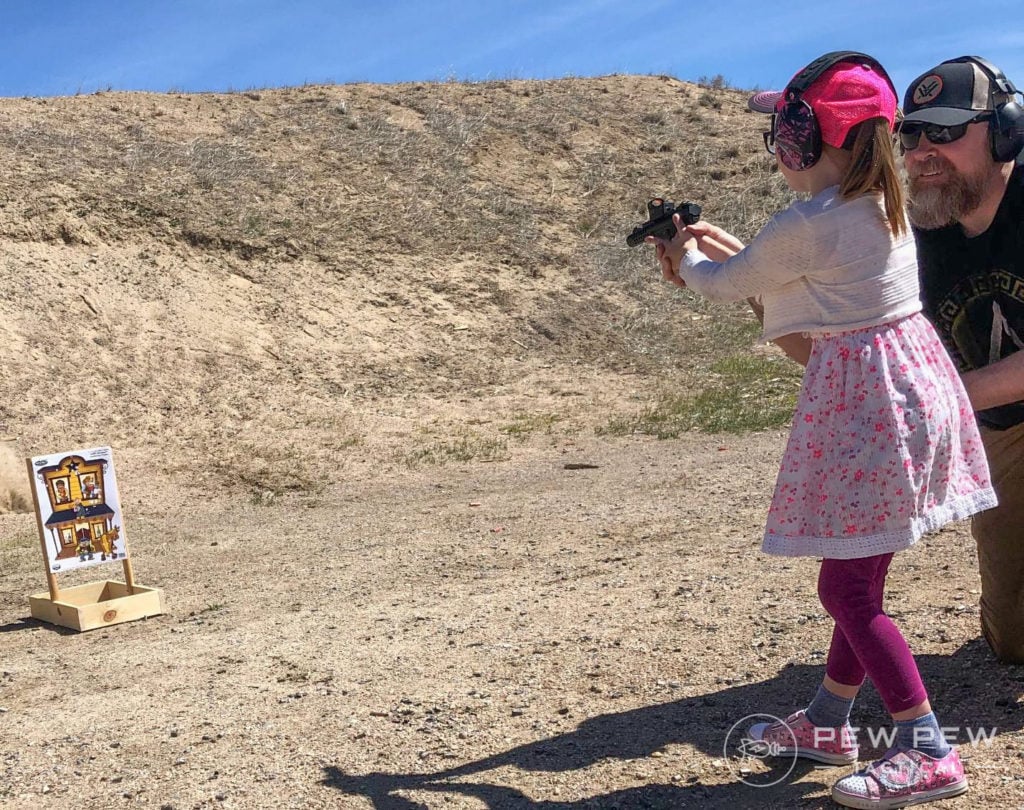
We can agree firearms and children might seem like a combination fraught with risk, but if you read on you’ll find some tips and training ideas for armed parents (and guardians) who will likely have their children around if a self-defense scenario presents itself.
Table of Contents
Kat Ainsworth Stevens contributed to this article.
Safety First
Whether you use the NRA’s Eddie Eagle or some other training tool to assist you in teaching your kids about firearms safety, it’s a good investment.
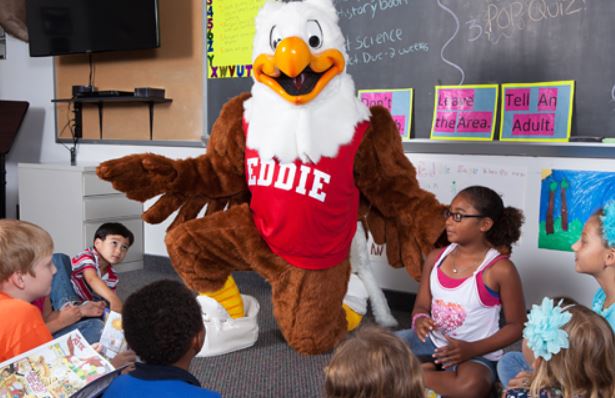
So, four golden rules, as per usual:
- All guns are always loaded.
- Never let the muzzle cover anything which you are not willing to destroy.
- Keep your finger off the trigger until your sights are on the target.
- Always be sure of your target (and what is beyond it).
It doesn’t matter if your kid is 4-years-old or 17-years-old, they should be safe around guns.
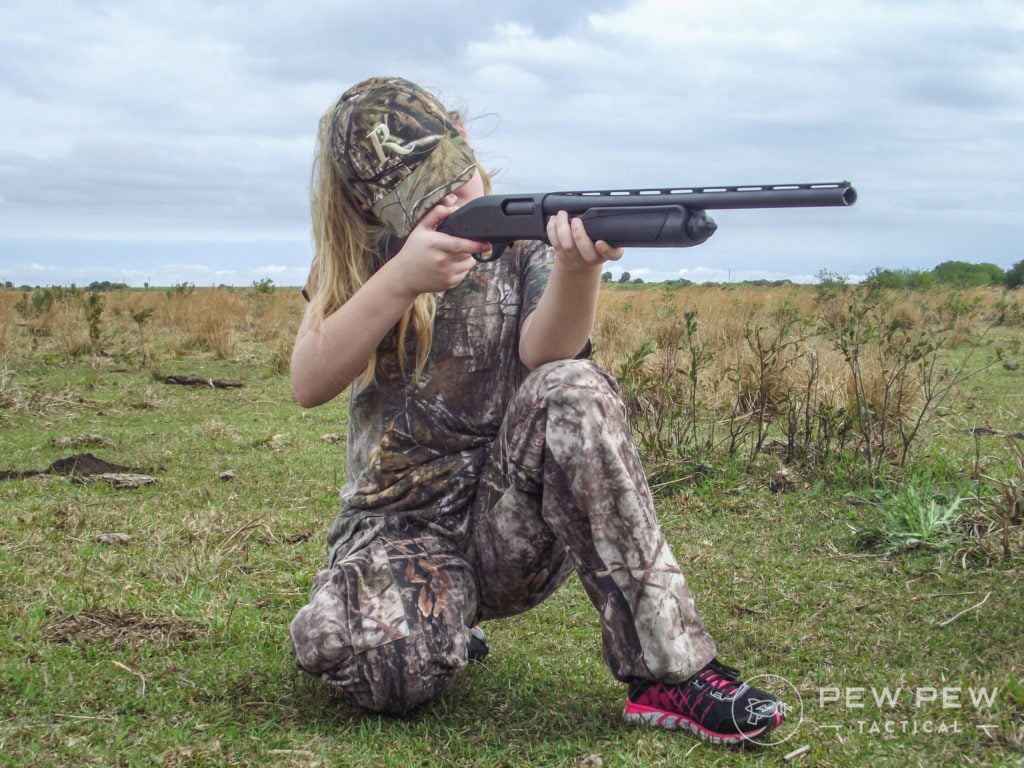
You’ll have to deduce for yourself when your child is capable of consistently following directions, then teach and supervise accordingly. You can practice with toy guns to gauge readiness.
Check out more in our Kids & Guns 101: Safety, Age, and Recommendations article.
Protect Yourself
The vast majority of what we learn in defensive handgun classes is protecting ourselves. There are classes for couples and teams but those tend to be the exception rather than the rule.
As for classes geared specifically for parents, those are truly rare. They do exist — check out The Armed Parent/Guardian taught by Melody Lauer and John Johnston.
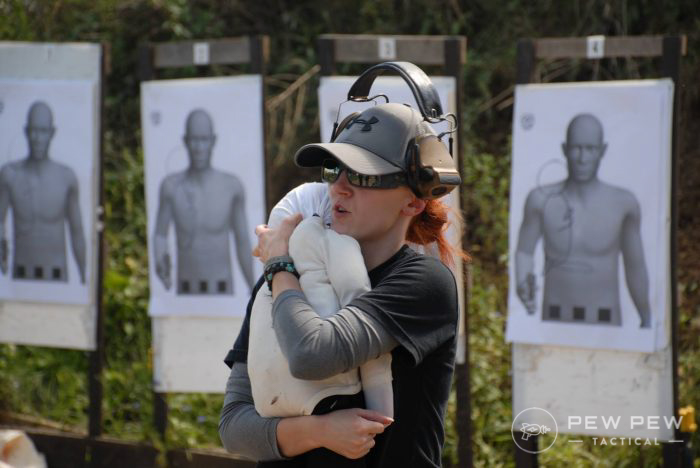
When kids are involved, we tend to put them first but this brings up an important concept — similar to the oxygen mask demos they give on airplanes instructing you to place your own mask before putting a mask on your child.
You must be prepared to protect yourself first.
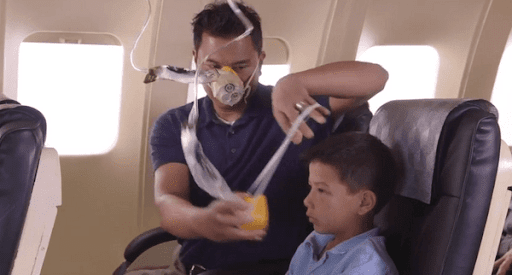
Simply being an obstruction to some threat is not a good long-term plan, we need to be able to actively counter threats. Knowing how to use your gun to defend your own life will, in turn, enable you to defend your child.
You need those foundational skills in place before moving on to more advanced work.
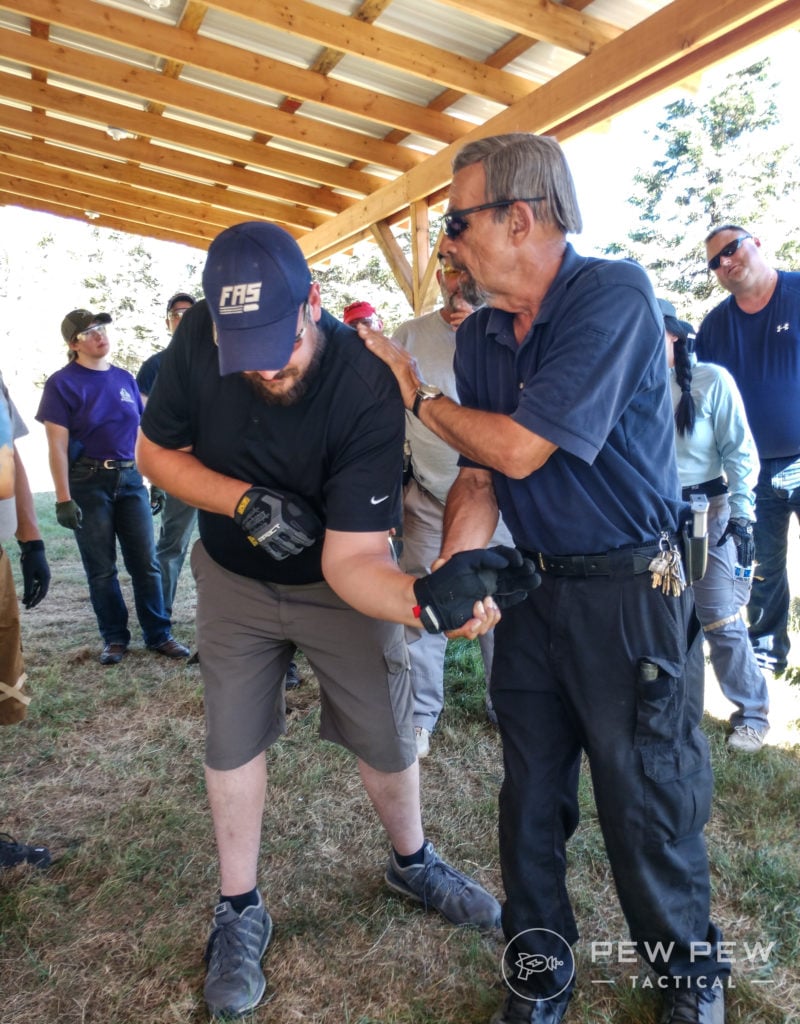
One-Handed Shooting
Outside of practicing one-handed shooting, it might be worthwhile to find a gun that’s easy to shoot one-handed. Some guns simply are harder to shoot with one hand than others.
For example, the Glock 27 in the snappy .40 S&W makes one-handed shooting a bit challenging.
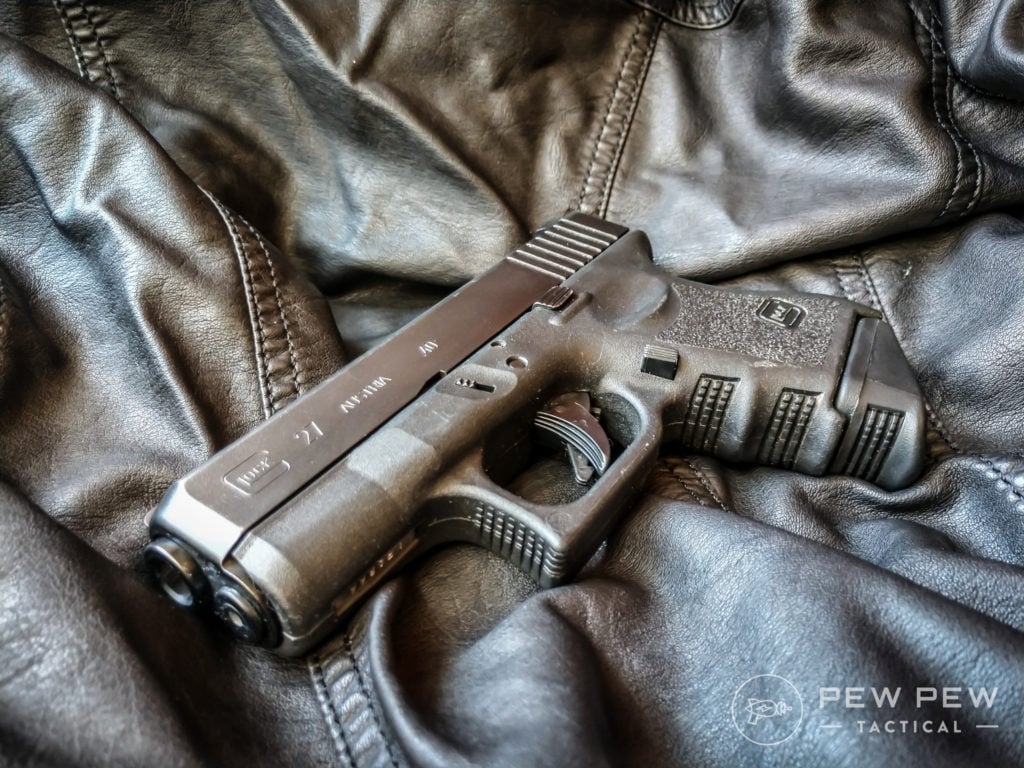
A micro-compact 9mm like the P365 or Hellcat makes an easy to shoot concealed carry gun, as do compacts like the Glock 19 and P320C.
Prices accurate at time of writing
Sometimes heavier guns with longer barrels make a somewhat off-balance handgun, especially with one hand.
The easiest way to make shooting one-handed easier is to add a compensator. Comps from Griffin Armament, KE Arms, Parker Mountain Machine, and Zev add hardly any extra length to the gun and add lots of control.
Prices accurate at time of writing
Concealing With Kids
One of the oddly difficult things about concealed carrying with children is the concealed part. Young kids, specifically those still being carried, have the unique ability to accidentally but expertly reveal your handgun.
They kick, move their legs, grab shirts, and all sorts of other fun stuff that finds a way to throw your shirt upwards.
This can reveal your firearm, and that breaks down the concealed part of concealed carry. Lord forbid those little legs to catch a part of your gun and knock it out of your holster.
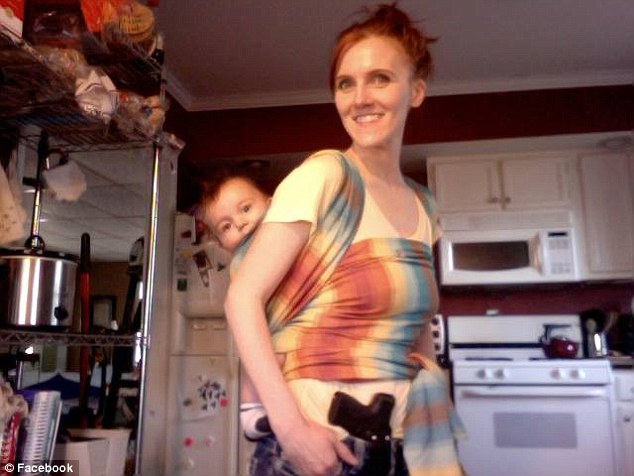
For these problems, I tend to advocate for a holster with adjustable retention. Adjustable passive retention can allow you to ratchet it down and secure the gun a bit better.
I’ve had my son’s foot somehow catch the light in my pocket and flick it upwards and out of the pocket. I watched helplessly as it clattered to the ground. Luckily my Streamlight was fine, but it made me rethink how I carried my son and positioned my gun.
Prices accurate at time of writing
You might need to adjust how you carry the kiddo and educate the older kiddos not to grab your shirt or cover garment in general.
Adjust as necessary and realize one method that works now might not work in 18 months. Be willing to adapt tactics, techniques, and cover garments as kids age.
Consider Carry Positions
There are various schools of thought regarding where on your body to carry a gun when you have kids.
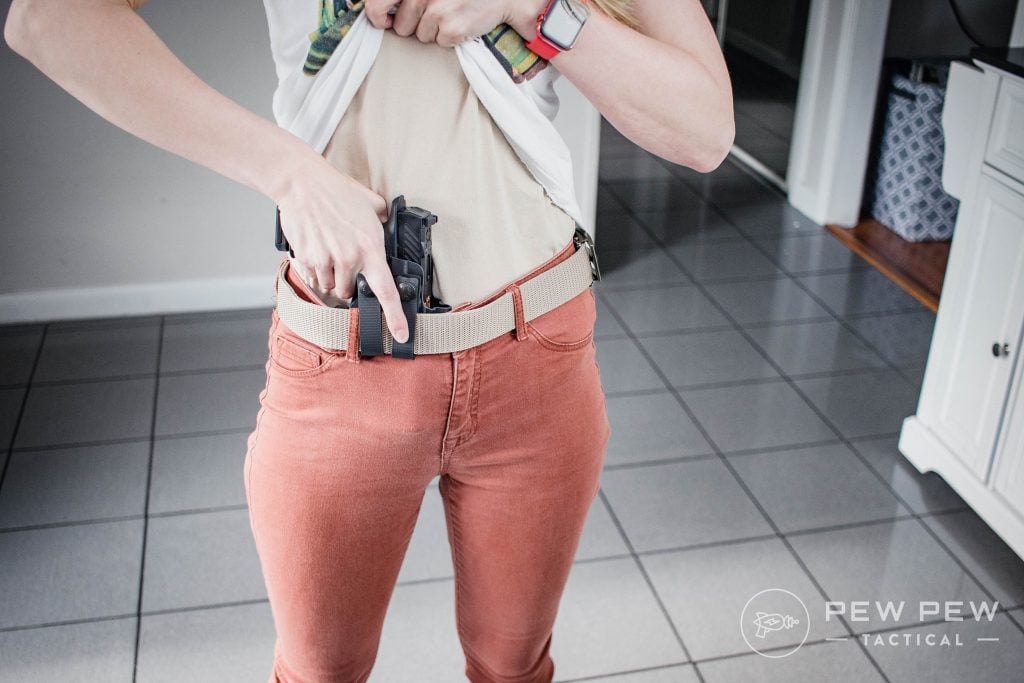
As a fan of AIWB (Appendix Inside the Waistband), I do tend to think it’s a good option for carrying with kids.
If you’re going to be hoisting a child onto your hip the last thing you want to do is literally seat them on the grip of your gun.
Small of Back carry is a less-than-stellar plan since it not only slows your draw time but makes it much more difficult to draw without risking muzzling someone (like your child).
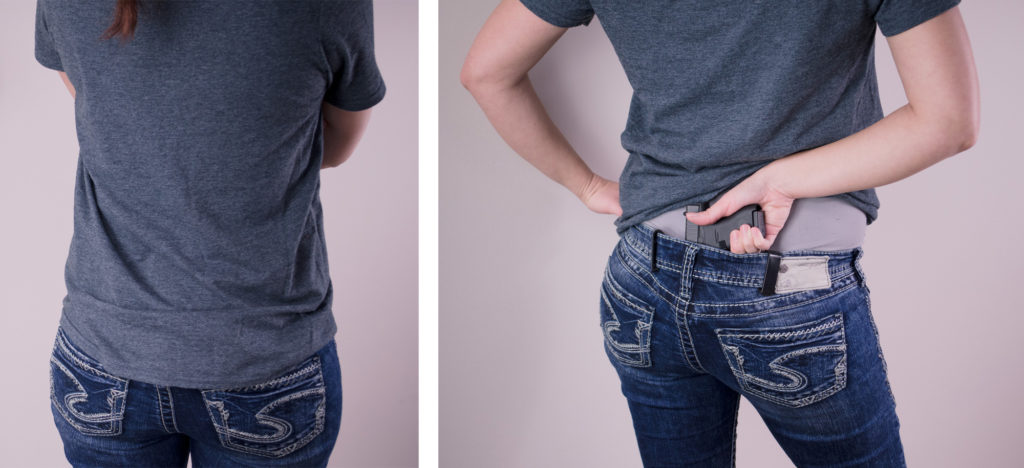
You can certainly carry strong-side hip around the 3 o’clock position, and a lot of parents do, but you need to be aware of the pros and cons.
Having kids can and will influence how you carry your gun, as well it should. Accordingly, you should train using your carry gun and its associated holster and belt.
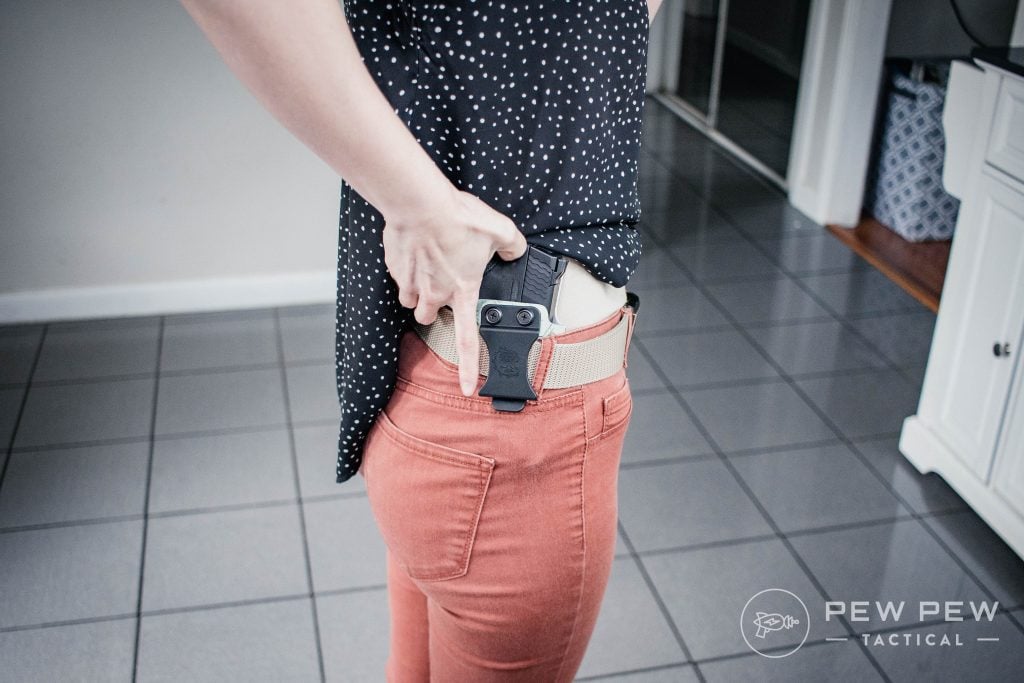
It is always important to use a quality holster and with kids it becomes paramount.
Your holster must protect the trigger guard, provide secure retention, keep your gun precisely placed at all times, and have a mouth that stays open after the draw for holstering.
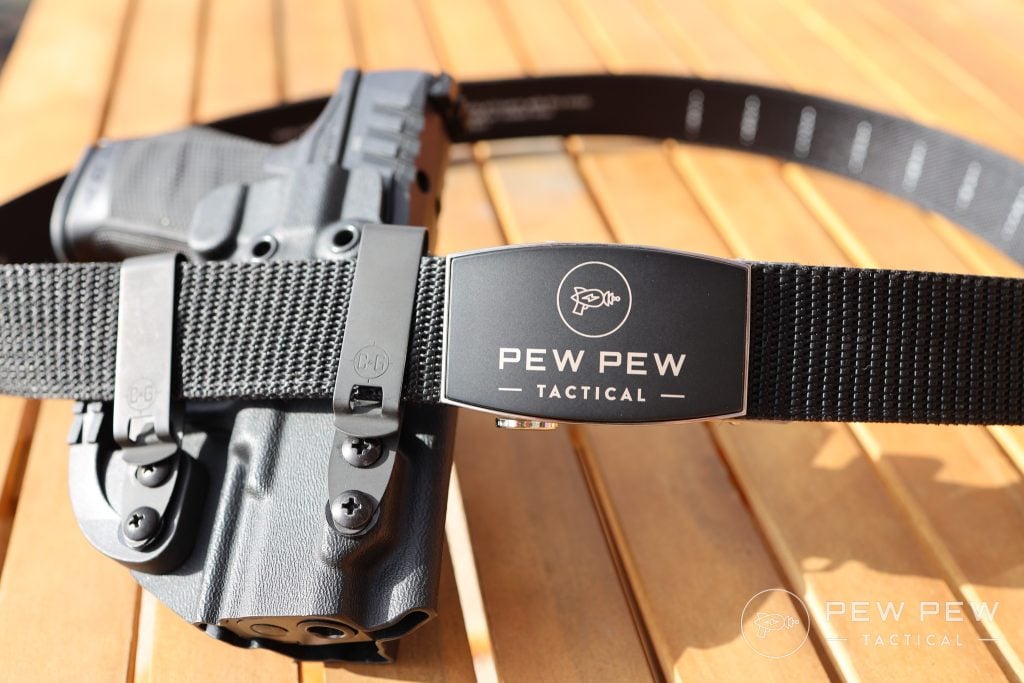
Pair your quality holster with a good gun belt for maximum success. Check out our top picks in Best Holsters and Best Belts.
Woo boy, off-body carry is rarely a good idea, but it’s especially bad with kids. Seeing headlines about people getting shot due to kids finding guns in concealed carry bags is always tragic.
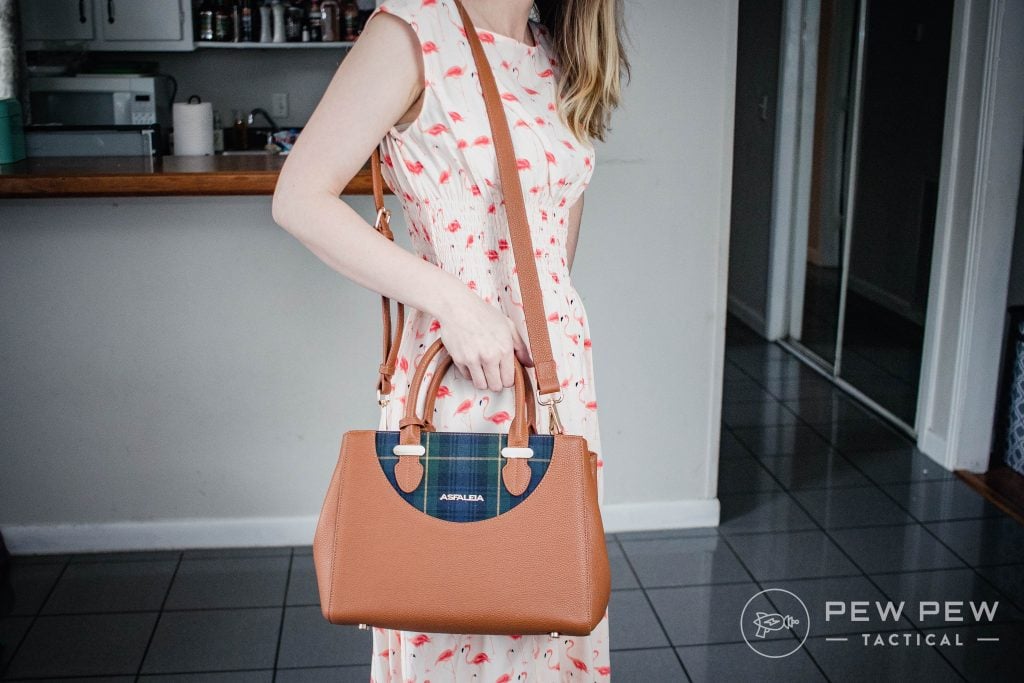
There are lots of problems with off-body carry, but with kids, the main problem is a lack of discipline. People who carry off body have to carry the bag like it’s a holster, but a lot of people don’t seem to think that way.
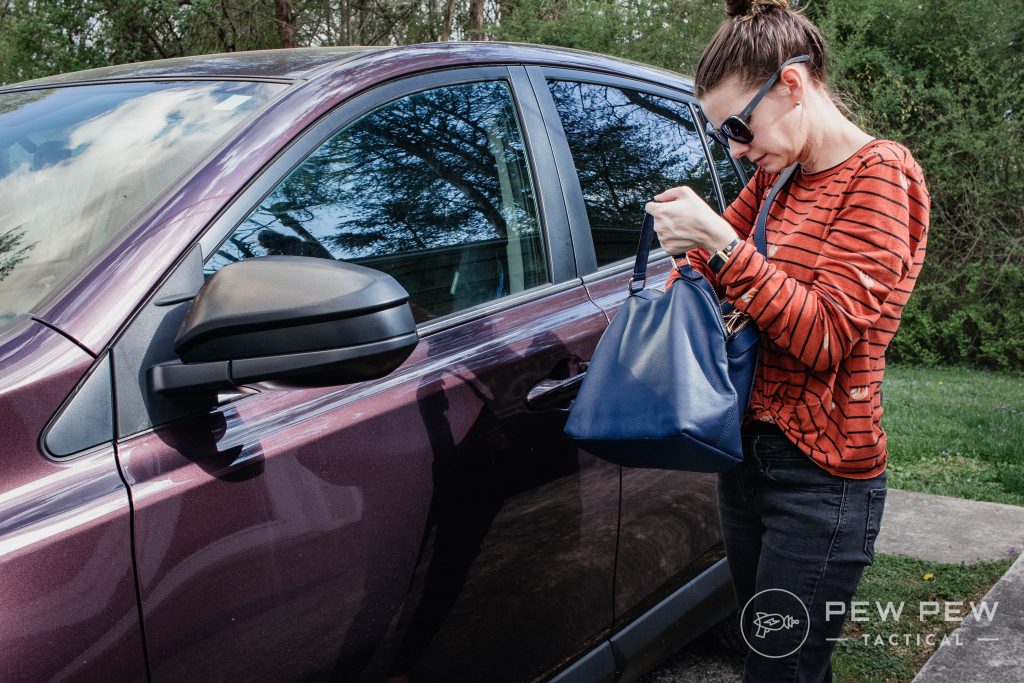
We know people lack discipline because headlines regarding kids finding guns in concealed carry bags exist. Kids naturally explore and search, especially when bored.
A search for gum can lead to the discovery of a handgun. Ditch the concealed carry bag, invest in a good belt and holster.
Using What You Got
Diaper Bags Rule
Diaper bags are amazing! Not only because poop happens, but because you get a whole bag to pack stuff! I’m not suggesting carrying a gun in your diaper bag. That’s silly, stupid, and dangerous.
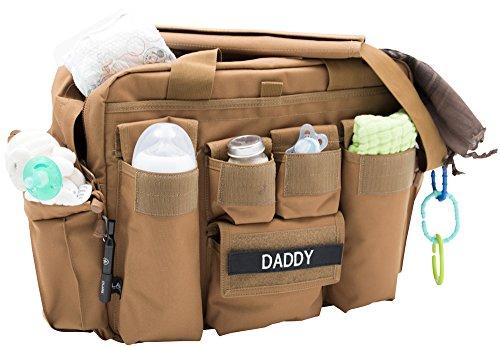
What I’d advocate is using that diaper bag to stash a nice IFAK. One pocket can hold a full-sized IFAK that allows you to pack a ton of medical stuff. Enough to provide for a family’s worth of people.
Sure, violent encounters can happen, and medical kits are necessary for that, but so can car accidents, slip and falls at skate parks, a trip down some playground equipment, a fall from a tree, and more. Having a diaper bag with a full-on IFAK for treating boos and beyond can be super valuable.
Prices accurate at time of writing
Don’t know what IFAK to get? Don’t worry, we got you covered. Head over to our Best IFAK Roundup for more deets.
Diaper bags can also pack an external cell phone battery, a multi-tool, a flashlight, and more in a very convenient and always carried package.
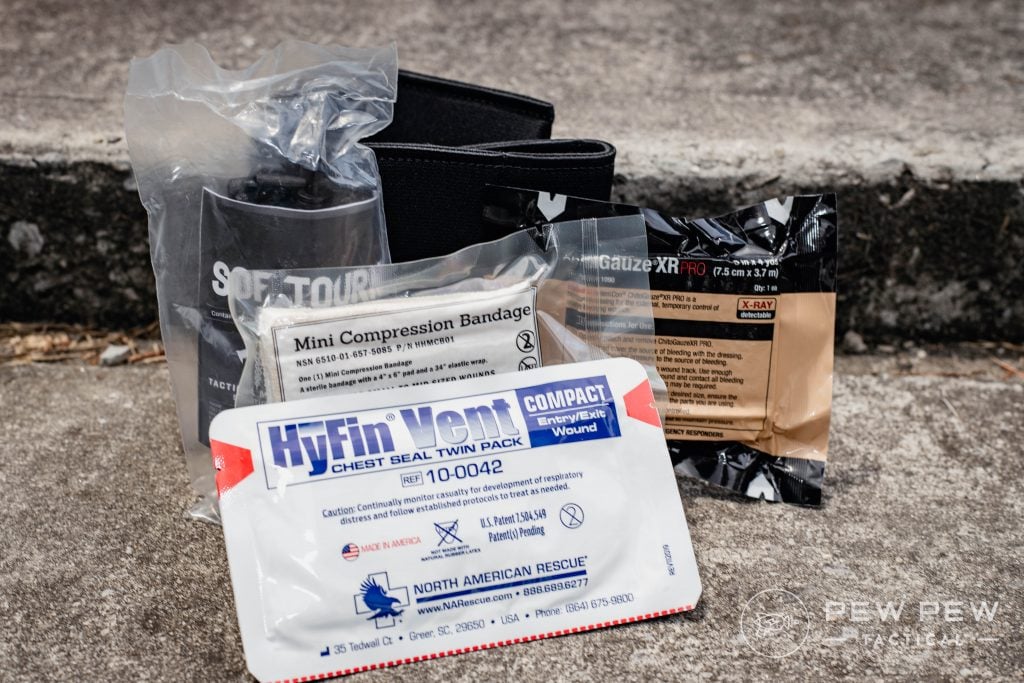
Do You Even TQ?
There is no reason to not carry a tourniquet. If you’re carrying a tool designed to make holes you should be carrying one to deal with the after-effects of holes being made.
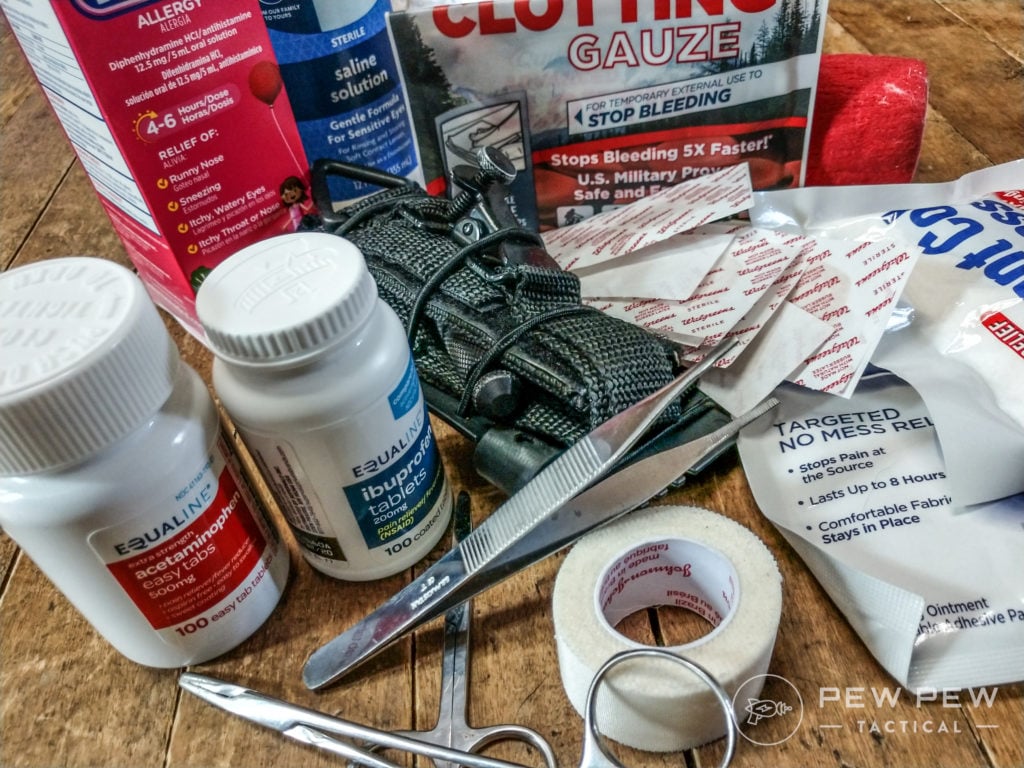
The CAT and SOFTT-W are great designs to carry. That said, most equipment requires training, so get schooled on proper application for these life-saving devices.
Prices accurate at time of writing
If you use a tourniquet and still need more, learn how to effectively improvise. Sometimes, they can fail or need supplemental support. Here again, training is crucial.
Prices accurate at time of writing
Need help getting started? Let us walk you through the Best First Aid Classes: Beginner & Intermediate.
The Stroller
Strollers put kids in front of you, and that can be super tough to deal with from a defensive standpoint. They are also a necessity at times, and the alternatives are long treks trying to carry a kid and likely exhausting both of you along the way.
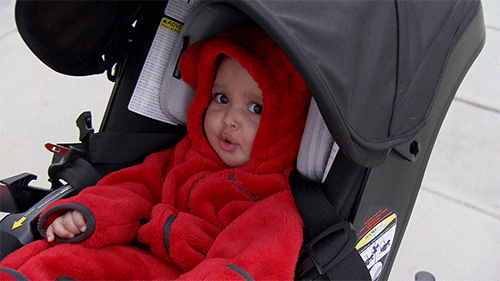
Defense with a stroller still requires single-hand shooting, but depending on the stroller could challenge your draw. How do you deal with it? Well, you train for it. Getting a stroller to the range can be tough to do, so this might be a dry fire practice situation.
Moving and steering a jogging stroller is much easier to do with a single hand than a conventional stroller.
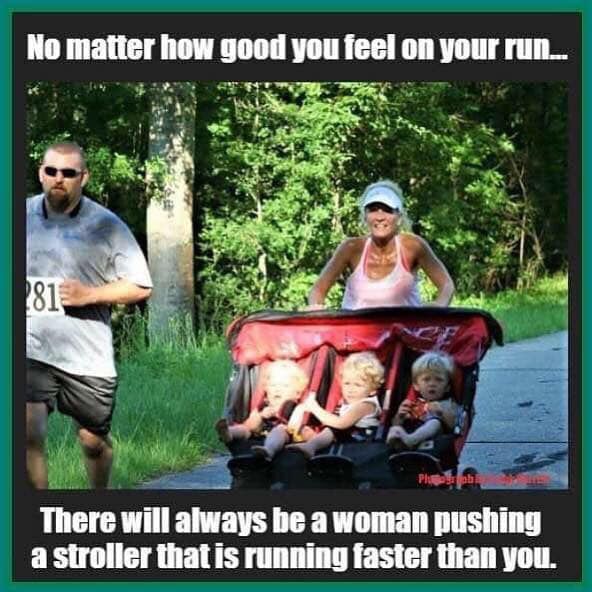
I’d advise obtaining a good stroller that turns easily and can handle a majority of environments. This typically means a jogging stroller. They have big tires, can turn on a dime, and can move fast!
Three-wheel joggers turn fast and allow you to get the stroller behind you, putting yourself between you and your child.
These types of strollers also allow you to get away quickly, and sometimes escape is better than confrontation.
Let’s Talk Tactics
The age of your kids matters a lot for this one as does their individual comprehension.
When my daughter was little it was a simple enough thing to teach her not to hold my strong hand. I’m right-handed which meant I actively taught her to walk on my left-hand side and not to grab for my strong hand if something scary happened.
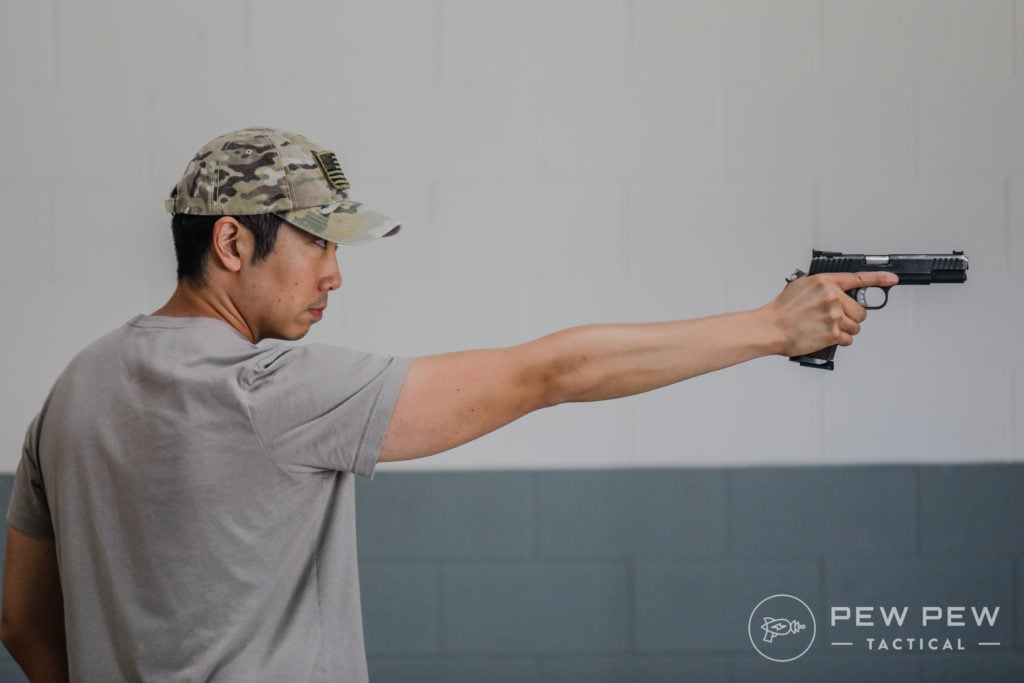
She knew not to crowd my gun side, crush it against my body, or otherwise hinder my ability to protect us both.
If you’re thinking you’re just going to frighten your kids by having such a frank discussion with them, well, all kids are different. It is up to you to figure out how much information and responsibility your kids can handle.
However, it is far wiser to begin approaching these topics at a young age than it is to keep them in a protective, naïve, bubble because you don’t want to upset them. Take this on in stages, as they mature.
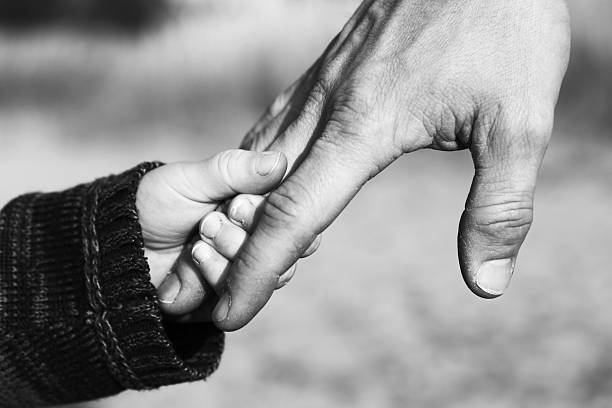
If your child is holding your hand (hopefully, your support-side hand), neither of you will be served well by allowing them to hang from your hand.
Just as you hold your gun tightly when shooting one-handed you should be holding your child’s hand with a steel grip, preferably pinning them in place during a defensive encounter.
They shouldn’t be swinging back and forth; your arm should be rigidly in place and pinning their hand or arm in place.
Jeff Gonzales offers superb advice on prepping your family for a self-defense event in the Brownells Daily Defense video below.
Practice, Practice, Practice
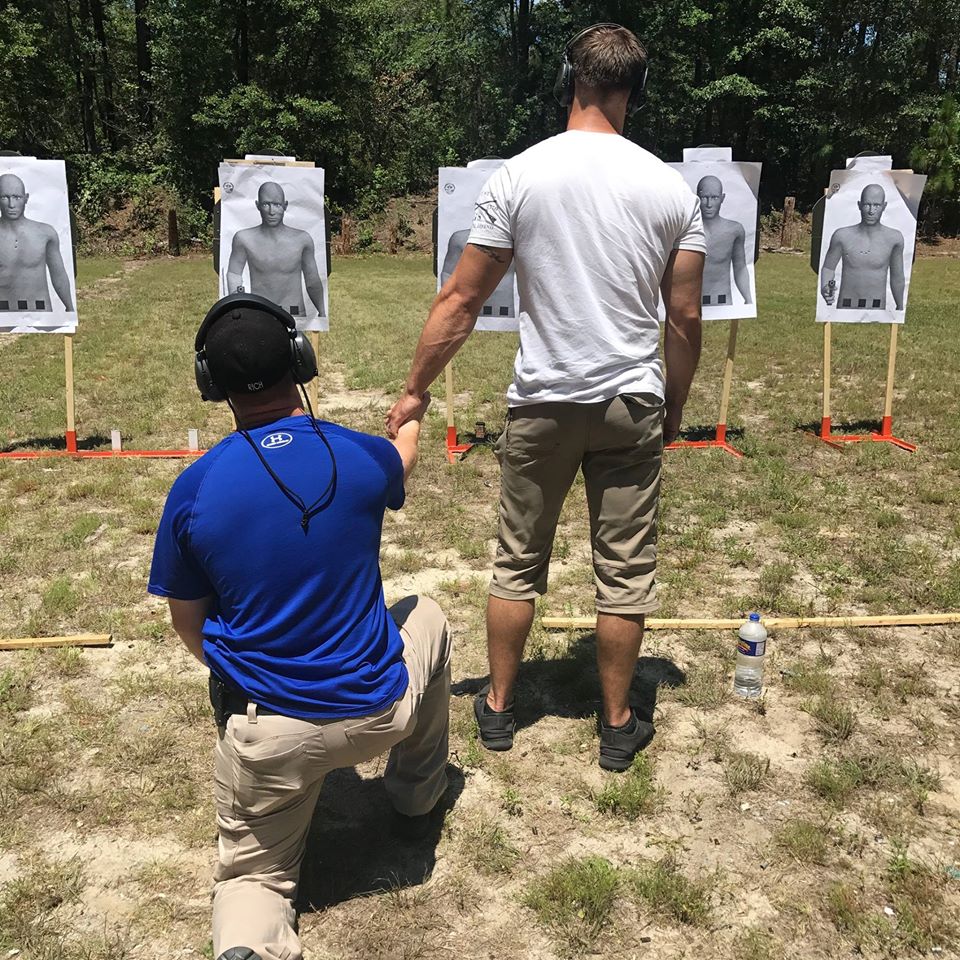
This is a technique you can practice with an adult friend on their knees beside you (encourage them to pull like a child might).
Knowing how to stiff-arm a child away and slightly behind you is a good skill to have in your toolbox.
If you don’t have a partner to hold your hand while you shoot, or perhaps your range prohibits it, there are all alternatives. I like to simulate a child holding my hand via a kettlebell. This requires some strength to hold and prevent from swinging.
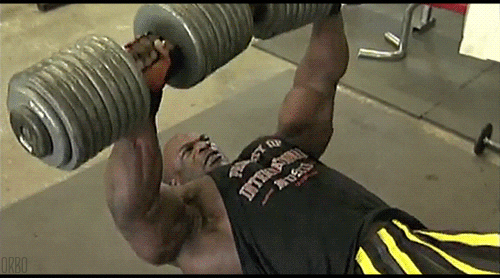
It adds resistance and allows you to muscle it and pin it down as if it was a resisting child’s hand. A kettlebell works, so does a dumbbell, as does an ammo box full of sand.
Anything a little heavy that can be held with a single hand makes a significant difference.
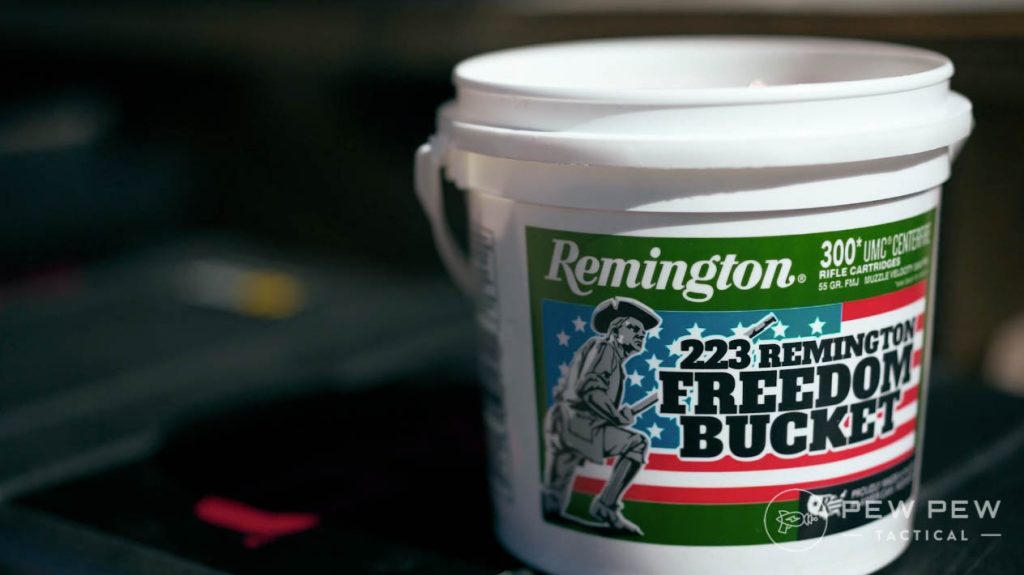
Of course, if you have an infant you’re going to have a choice to make…
Do you hold them against your body as you shoot one-handed and hope for the best or do you attempt to rapidly put them down, typically by slipping them down the side of your body and leg?
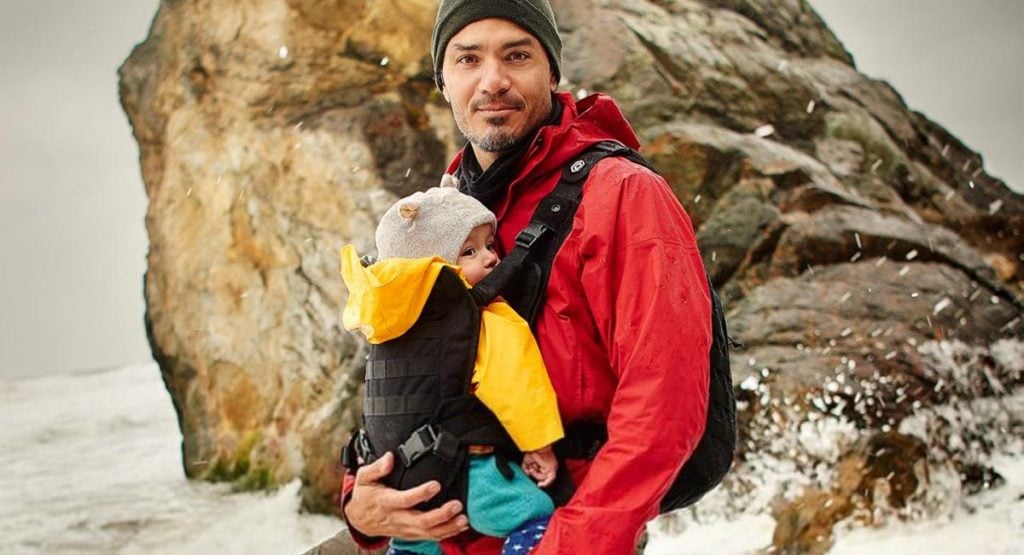
This is a situational issue and one you should plan for in advance using the usual mental formula: if A then B, if X then Y. Plan ahead and practice with appropriately weighted dolls.
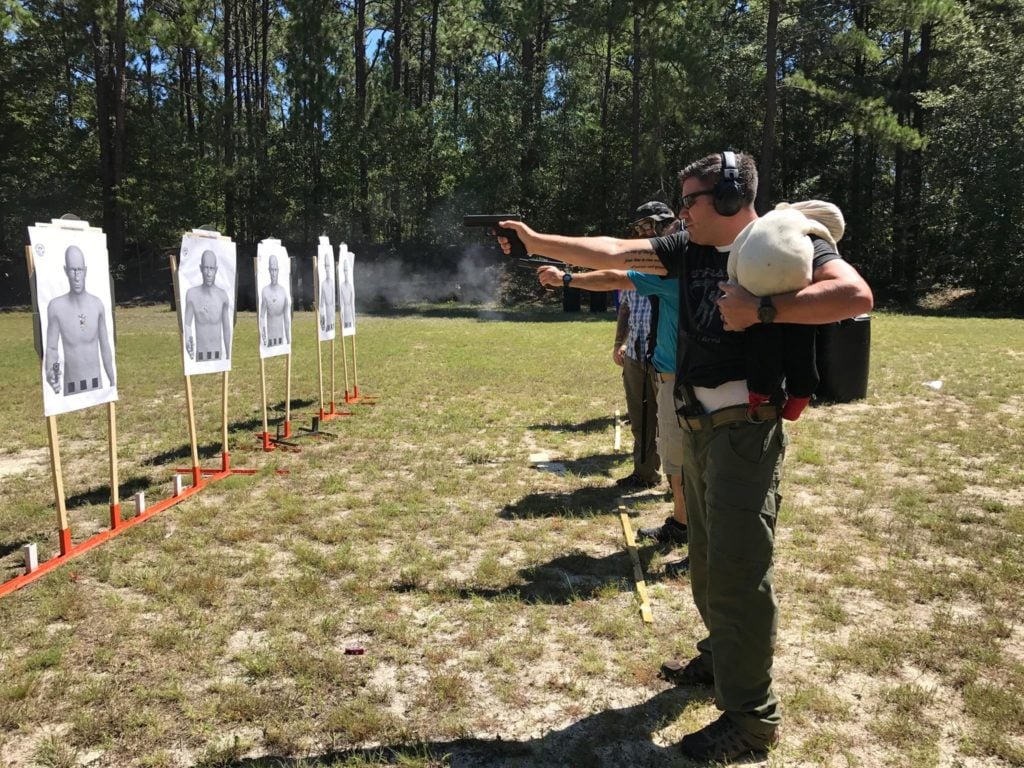
Remember, you don’t want to drop an infant’s head on the ground or put them at risk of being trampled. Instances where it’ll be a good idea to put them on the ground are going to be rare.
Multiple Kiddos
What if you have multiple kids? This is a tough one. Typically the older kids are going to have more responsibilities than the little ones.
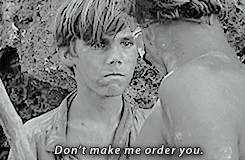
If you have two kids and the age gap is, say, 18 months apart you don’t have a lot to work with when they’re small. When your child is old enough to do so safely and effectively, teach them to get out rather than hide behind you.
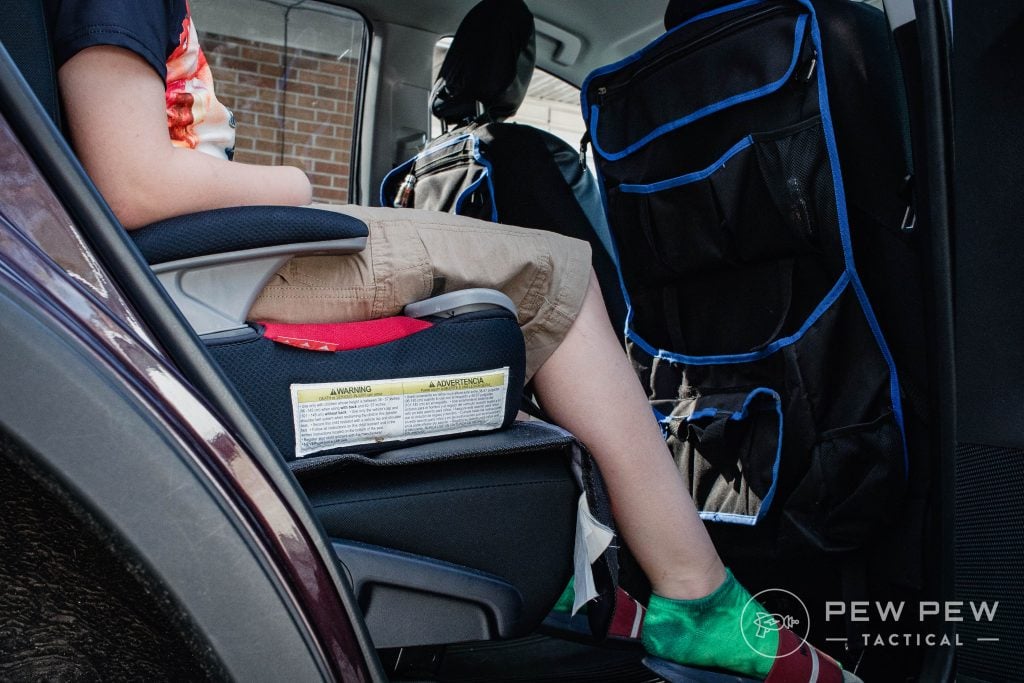
If you have an ambulatory, grade-school-aged child and also an infant you’re going to need to plan accordingly.
This means the older child either needs to understand how to get away and out or needs to be capable of staying behind you without grabbing either of your hands or tripping you.
Speed Counts
It is your job to stop the threat as quickly as possible. This is where your usual defensive handgun training comes in. The faster you stop the threat, the quicker your kids will be safe.
Shoot until the threat stops. Sounds easy, right?
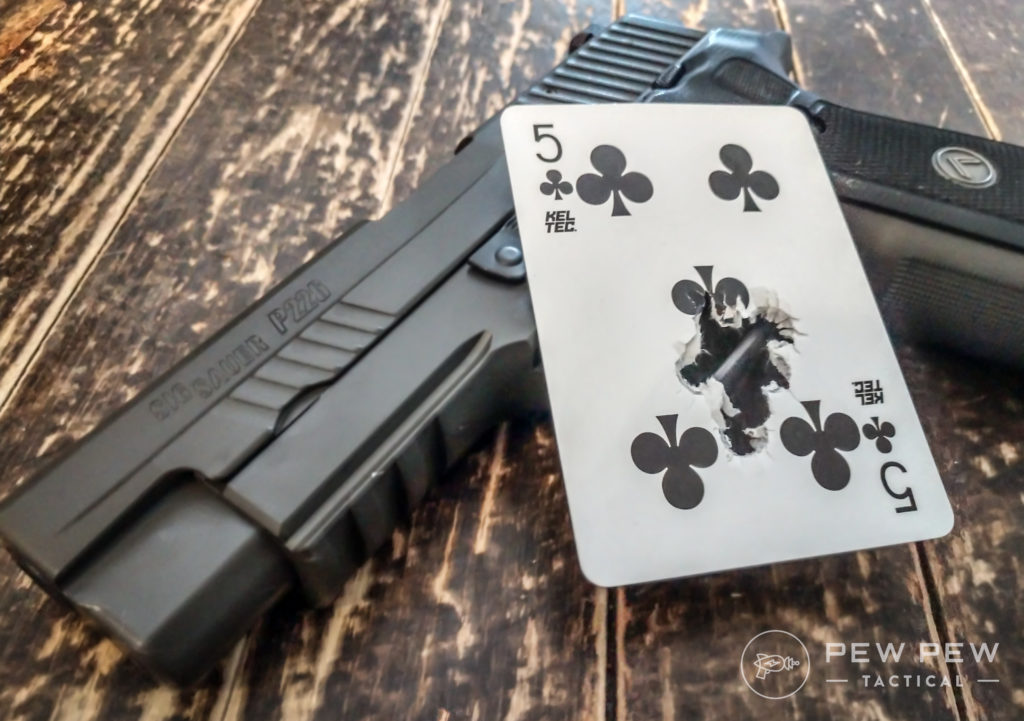
It’s at least a simple concept to comprehend but if your attention is divided by a screaming toddler or hyperventilating juvenile things get tricky in a hurry. Understand that your top priority is to stop the threat.
That means being familiar with shot placement–for example, not all headshots are created equal–and on-the-spot decision-making. Your training must be up to the task.
Communication: Two Way Street
Your kids should not only listen to you but do as you say without question.
They must get down or back without argument. And they absolutely must understand that if and when you draw your firearm, you mean business.
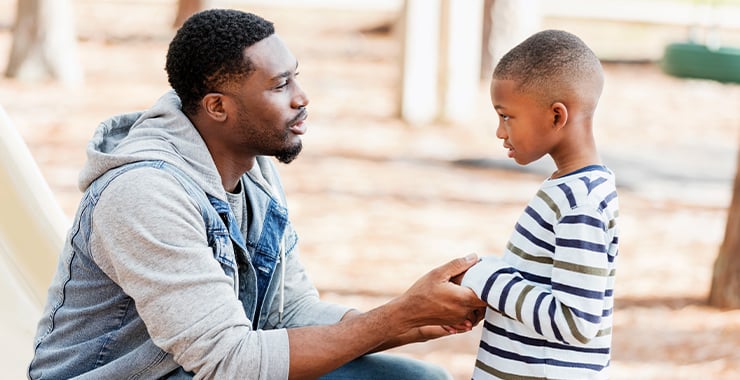
The appearance of your gun is not a fun time or panic central, it’s time to take the situation seriously. This means you’re going to have to work with and teach your children.
Conclusion
Despite the challenges, you can safely implement firearms into your defensive plans involving children. Remember, we rarely get to pick when and where that encounter happens, so stack the odds in your favor ahead of time.

You do not want a fair fight. Buy good gear. Get yourself properly trained and have a plan — have contingency plans–to defend your life and the lives of your kids.
Originally published on pewpewtactical.com
